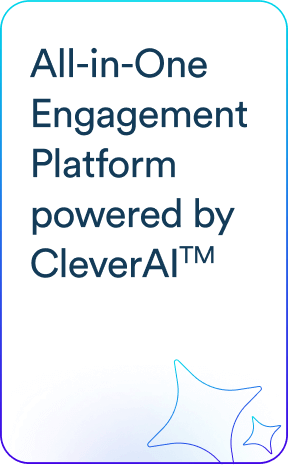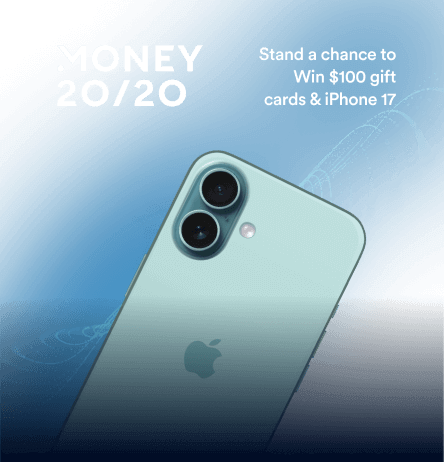As noted in part one of this blog, CleverTap recently presented at ZeeMELT on a panel moderated by Peggy Ann Salz, author, analyst, and senior contributor at Forbes. The session focused on how marketers can harness hyper-personalization to engage and retain shoppers in new ways and open up new opportunities.
This panel featured Kirti Varun Avasarala, Chief Product Officer at Meesho, along with Abhishek Gupta, Chief Customer Officer at CleverTap.
At Meesho, Avasarala leads the product management, design, and user research functions. He also has over 14 years of experience in strategic consulting and product leadership.
Gupta has a similarly long track record in understanding commerce and is the Chief Customer Officer at CleverTap, leading all post-sales, customer-facing functions serving the company’s enterprise customer base.
In part one of this blog, we discussed how Meesho became the breakout commerce star of 2022, disrupting the Indian ecommerce market and increasing downloads by 5x in 12 months.
Now, let’s dive into exactly how they grew their numbers and expanded the overall ecommerce market in India using data, personalization, and ingenuity.
How Meesho Did It
As we outlined in part 1, data has been the key to Meesho’s efforts — driving Meesho’s understanding of why this market was not being served and exactly what kinds of features and benefits would most compel consumers to use and ultimately find value in Meesho’s app.
According to Avasarala, they stumbled upon a key insight: that a lot of Meesho’s new customers were also new to ecommerce. This meant Meesho’s app was oftentimes their first interaction with any version of online commerce.
As Avasarala describes it, “As we saw this happening more and more, we realized that we have the onus of teaching these people how to shop online. Because most of them haven’t learned the ins and outs via some other app. We had to figure out how to guide them through the shopping journey and get them to a point where they’re self-sufficient.”
They Formed Customer Habits
This led them to the concept of habit formation. “When we analyzed the data, we realized that once a customer crosses a certain number of orders in the first few months, that’s when their attention starts to stabilize. And we defined that as a habit formation point, using retention as the guiding metric,” says Avasarala.
After this stabilization point, the challenge then became how to get more of these new customers to form a habit around ecommerce.
Avasarala knew that one approach would be to ensure that their onboarding experience was optimized so that the new user was able to place the first transaction with ease. And then of course, they’d guide them through their next few transactions to further support a rewarding, successful experience.
As for the onboarding experience itself, it needed to eliminate all of the complexity that an ecommerce app typically has, and instead, expose this complexity to a customer in a gradual fashion. “This means that the first time you come to our app, you don’t need to understand everything that Meesho has to offer. We can offer that experience to the user slowly, so that only when they’ve become more proficient in shopping do we open up all the features that we have,” says Avasarala.
They Shaped Demand
After habit-formation comes demand-shaping, to further move new customers through their user journey.
Meesho has tens of millions of items available on their app. But for somebody who’s new to ecommerce, trying to show them all of that inventory would be overwhelming. So they needed to figure out the “right things” to show to that user, to not overwhelm them. The right things were: items of high quality, with a post-order experience that was good, and where returns were easy.
Personalization, Redux
In the context of these new customers, Meesho understandably had less data to guide them, so customer personalization required a different approach. This involved a historical analysis of what other customers new to ecommerce bought in their first few transactions to get them to that habit-formation point.
Meesho would then take that data and figure out how to apply it to every new customer by trying to match the new customer’s attributes with loyal customers. By doing this consistently, over time, the retention started to stabilize and their customer base steadily grew.
As Avasarala can proudly claim, today, they have close to 13 million monthly active customers, with a large portion being people acquired in the last 12 to 18 months, all of whom have crossed this habit-formation point.
Notifications and Challenging the Prevailing Wisdom
Let’s dig into Meesho’s experimentations challenging some of the accepted beliefs about notification frequency.
According to Avasarala, “the prevailing wisdom in ecommerce has always been that you should send notifications to a customer only if it’s really needed. And the more notifications you send, the more you risk becoming noise to your customers. Send too many notifications, and customers will uninstall your app because you’re annoying them.”
But Meesho wanted to see if this prevailing view held true for the unique cohort of customers they identified. They analyzed their customer base, spoke to customers, and looked at their usage patterns on the app. From that they discovered that a lot of their customers have time on their hands. Many of these customers actually come to the Meesho app just to browse and not because they had anything they necessarily needed to buy.
Based on this discovery, they started experimenting, sending more notifications, not fewer — typically, 20 to 30 notifications a day, which is very high compared to most ecommerce apps. The result of sending more notifications? User engagement actually increased. App uninstalls also weren’t affected and retention was very strong. “So that I think was very, very counterintuitive,” remarks Avasarala.
This is because Meesho’s users do not see the app as a simple shopping app, but use it as a form of entertainment as well. As Avasarala describes it, “if you look at social media, these apps send multiple notifications a day, and their customers are okay with it. So, our app is a sort of hybrid of a social app and an ecommerce app. And that was one of the big revelations we had.”
But Don’t Forget Relevance
They also did a lot of experiments with the relevance of these notifications: what content to send to one customer versus another. And the volume of notifications and sending time of day both had some element of personalization.
“From all of these experiments and decisions that were very counterintuitive and against the prevailing wisdom for ecommerce apps, we’ve seen very, very high engagement,” notes Avasarala.
Data as a Disrupting Force
CleverTap’s Abhishek Gupta agrees that what Avasarala did was “a revelation” and one which supports CleverTap’s primary philosophy: that to best serve customers requires data and analysis to discern their preferences — individually and as segments or cohorts. Meesho disrupted certain preconceived notions and assumptions about customers about their preferences, because they looked at the data.
Gupta remarked: “What we have come to realize is that we’re living in a complex world. And so what we encourage brands to think about is to think about each customer as a segment of one and how does he or she want to be engaged. And then we have to do so in the most efficient and also the nicest possible manner.”
As we’ve seen, this may require a bit of ‘revelatory thinking’ and digging into your data to discover, for example, which customers want to receive 25 push notifications and which want to receive only one. And who doesn’t want push notifications at all, but wants to be engaged on email or WhatsApp.
Done right, the results can be astounding. As Gupta notes, “At CleverTap, we’ve worked with hundreds of ecommerce companies and have seen the journey from zero to one. And today, some of our largest customers, like Meesho, have hundreds of millions of subscribers. In some cases, we have customers who have more than 300 million subscribers on their app.”
At the end of the day, all of this good work can directly translate into solid profitability and fantastic revenues.
Looking Ahead
To wrap up the session, our moderator wanted to know what Avasarala thinks is the next growth enabler, beyond hyper-personalization.
Avasarala mentioned that a new concept for engaging customers and experimenting is “live streaming commerce.” This, he says, is “a whole new way for customers to shop.” It’s an experience where customers shop through a live video and engage with the seller or the creator to understand more about the product. And then buy it live, during the video. Avasarala believes there are many categories where this could be effective.
As for Gupta, he sees the future focusing on two things. One is in making sure that marketers are able to provide not only hyper-personalized messaging to customers, but also in ensuring that the app or the website experience is also a single unified experience, personalized to that unique individual’s needs and wants.
The second is automation, to allow marketers to achieve their business outcomes without having to spend a lot of time and effort. Today’s marketers need to be able to choose the winning option and not have to go through and manually decide which is the most relevant or effective and do that over and over.
This is a lot of the current innovation that is happening at CleverTap, especially on the product side. “We’re always focused on making sure that marketers have what they need to succeed,” says Gupta.

Sony Shetty 
Sony Shetty, adept in PR, media relations, and digital comms, enhances brand visibility with strategic thinking and creativity.
Free Customer Engagement Guides
Join our newsletter for actionable tips and proven strategies to grow your business and engage your customers.















































